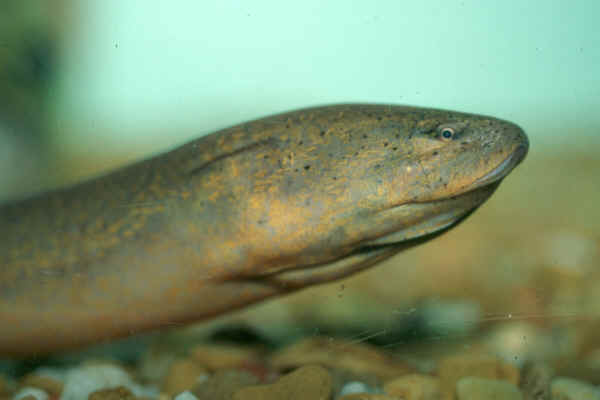Asian Swamp Eel
Thursday, November 3, 2016
Asian Swamp Eel
Scientific Name: Monopterus Alba
Figure 1

Common Name: Asian Swamp Eel
Figure 1
Distinguishing Features:
- Pectoral Fins
- Singular V-Shaped opening
- Mouth and teeth
Figure 2
Origin: Region in Asia between India and China. It was first introduced in Hawaii in 1990 and first discovered in Georgia in 1994.
Figure 3
Introduction: The Asian Swamp Eel was most likely brought to the area after escaping a fish farm. Because they have the ability to rapidly reproduce, they quickly infested the area and then expanded into other areas. It then made its way through Florida, up the Chattahoochee River, and then into New Jersey. Records of confirmed sightings of the Monopterus Albus can be seen below. As the picture to the left shows, they mainly inhabit only Southern NJ. The record below shows that they did not have any big presence in NJ before 2008, but due to rapid growth, can now be seen in multiple different waters in the area.
figure 4
Plan of Action/Future Control: Figure 5

The Monopterus Alba do not have many predators hunting for them in their non-native land. They are able to sustain life by preying on the fish and tadpoles in the area. Because of their hermaphroditic nature, they also do not have to worry about reproduction. The Monopterus Alba has spread so fast and disrupted so many different bodies of water, the first step of action would be to lock off and contain the waters that they are currently in. The next step would be removal, which would have to be done manually by professionals. Either a monetary incentive or just the fact that the fish population would be better off could encourage fisherman to take action. Also, in other areas across the world the Asian Swamp Eel is a delicate cuisine. If this cuisine was introduced to the United States it would encourage people to catch and cook this species. As long as Asian Swamp Eels are never used as bait, or held in fish farms in the U.S., overtime this plan will work and the native ecosystem will go back to normal. The last thing we want to happen is the extinction of native species. To make sure that extinction does not happen, it is important that native animals either adapt to
Figure 6
Fun Facts:
- Asian Swamp Eels can live in both fresh and salt water
- It can survive in cold temperatures and deprived of resources
- One Swamp Eel survived in a wet towel for several months without any food and water
- Swamp Eels are virtually unaffected by explosives and poisons
- They eat at nighttime
Citation
Figure 1
Figure 2
Figure 3
Figure 4
Figure 5
Figure 6
Asian Swamp Eel
Scientific Name: Monopterus Alba

Common Name: Asian Swamp Eel
Distinguishing Features:
- Pectoral Fins
- Singular V-Shaped opening
- Mouth and teeth
Origin: Region in Asia between India and China. It was first introduced in Hawaii in 1990 and first discovered in Georgia in 1994.
Introduction: The Asian Swamp Eel was most likely brought to the area after escaping a fish farm. Because they have the ability to rapidly reproduce, they quickly infested the area and then expanded into other areas. It then made its way through Florida, up the Chattahoochee River, and then into New Jersey. Records of confirmed sightings of the Monopterus Albus can be seen below. As the picture to the left shows, they mainly inhabit only Southern NJ. The record below shows that they did not have any big presence in NJ before 2008, but due to rapid growth, can now be seen in multiple different waters in the area.
Plan of Action:

The Monopterus Alba do not have many predators hunting for them in their non-native land. They are able to sustain life by preying on the fish and tadpoles in the area. Because of their hermaphroditic nature, they also do not have to worry about reproduction. The Monopterus Alba has spread so fast and disrupted so many different bodies of water, the first step of action would be to lock off and contain the waters that they are currently in. The next step would be removal, which would have to be done manually by professionals. Either a monetary incentive or just the fact that the fish population would be better off could encourage fisherman to take action. Also, in other areas across the world the Asian Swamp Eel is a delicate cuisine. If this cuisine was introduced to the United States it would encourage people to catch and cook this species. As long as Asian Swamp Eels are never used as bait, or held in fish farms in the U.S., overtime this plan will work and the native ecosystem will go back to normal.
Fun Facts:
Fun Facts:
- Asian Swamp Eels can live in both fresh and salt water
- It can survive in cold temperatures and deprived of resources
- One Swamp Eel survived in a wet towel for several months without any food and water
Subscribe to:
Comments (Atom)



